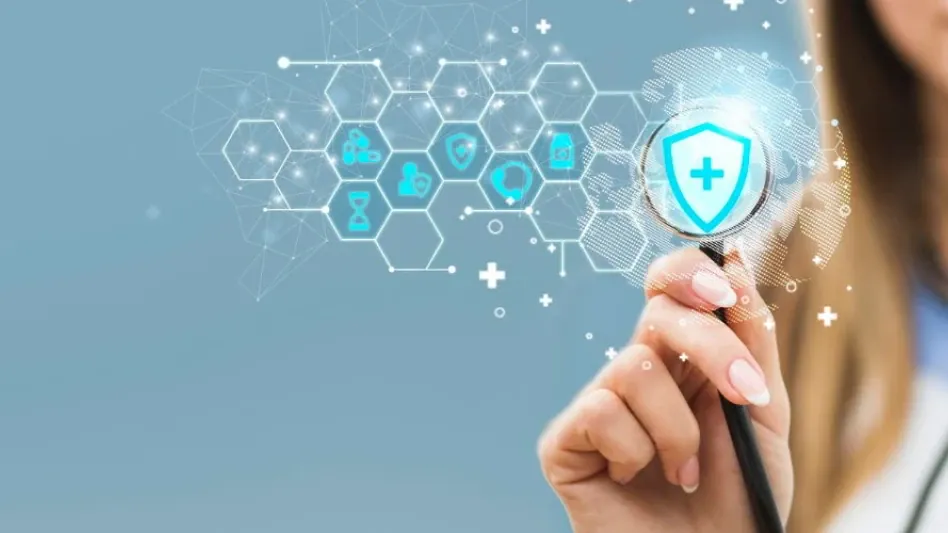The healthcare sector is undergoing a transformative phase marked by significant advancements in cybersecurity and Electronic Health Record (EHR) systems. Published on September 19, 2024, under the Privacy & Security section and authored by Andrea Fox, the article “Vendor Notebook: New cybersecurity and EHR performance upgrades” delves into the latest innovations and integrations designed to enhance cybersecurity defenses, EHR functionalities, and overall daily healthcare operations. Key players like Crowdstrike, Oracle, Meditech, Innovaccer, and Zscaler are at the forefront of these technological upgrades, aiming to deliver more resilient, streamlined, and user-friendly healthcare IT infrastructures.
Crowdstrike: Enhancements in Cybersecurity
Improved Detection and Response Capabilities
Crowdstrike has made notable strides through its integration with Zscaler via the Crowdstrike Falcon cybersecurity platform, promising a substantial shift in healthcare security. The principal focus of this collaboration is to enhance detection and response capabilities that could significantly boost the performance of security operations centers (SOCs). By combining efforts with Zscaler—a zero-trust exchange platform—Crowdstrike aims to address risks more effectively while providing a more cohesive approach to threat detection. This integration looks to reduce traditional data silos, making it easier to maintain HIPAA and HITRUST compliance while offering rich incident and asset data that can be easily shared.
The enhancements include prebuilt scripts for threat intelligence sharing and customized workflow tools aimed at easing the day-to-day operations of IT security and SOC teams. Additionally, through active security incident signals, the Falcon platform boosts Zscaler’s Adaptive Access Engine, ensuring more effective policy enforcement and device access control. This combination of artificial intelligence (AI) and automation promises to eliminate blind spots in SOCs, mitigating the risks of cyberattacks completely.
Partnerships and Collaborative Efforts
Crowdstrike’s commitment to future innovation is exemplified by its partnerships with Amazon Web Services (AWS) and NVIDIA to foster the next generation of AI-driven cloud security startups. This strategic collaboration is aimed at nurturing innovation within the domain of cybersecurity, leveraging the cloud capabilities of AWS and the computational prowess of NVIDIA. Crowdstrike and its allies are setting the stage for an era where AI and cloud technologies converge to create robust, advanced cybersecurity solutions. By focusing on fostering these next-generation solutions, Crowdstrike emphasizes the importance of staying ahead of evolving cyber threats and creating more comprehensive, intelligent security protocols.
Oracle: EHR and Healthcare Data Exchange Improvements
Post-Acquisition Upgrades and Enhancements
Following its acquisition of Cerner, Oracle has committed itself to transforming the EHR experience and productivity levels within healthcare settings. The company has introduced several upgrades designed to refine their EHR systems significantly. Among these improvements are advanced clinical decision-making tools, streamlined chart reviews, enhanced documentation processes, and new medication procedures that aim to prevent errors and boost safety. Oracle’s efforts reflect a recognition that efficient healthcare delivery is intricately connected to seamless data access, which has led to the introduction of Oracle Health Seamless Exchange. This platform utilizes the Trusted Exchange Framework and Common Agreement to facilitate easier and more secure data exchanges.
Oracle’s updates bring near real-time mobile charting capabilities, offering healthcare providers the flexibility to review and update patient information on the go. Improved order management features with closed-loop tracking ensure that processes are tightly integrated, reducing the chances of errors. In addition, the modernized Ambulatory Referral Management system allows for more efficient patient referral tracking, significantly reducing administrative workloads while ensuring timely and accurate patient care.
Enhancements in Order Management and Referral Systems
The new features in Oracle’s EHR systems include a focus on improving the accuracy and efficiency of clinical workflows. The streamlined chart review processes and advanced documentation tools enable healthcare providers to spend less time on administrative tasks and more on patient care. By introducing new medication processes, Oracle is making strides in error identification, thereby increasing overall patient safety. The near real-time mobile charting capabilities provide healthcare professionals with the tools they need to stay updated and make informed decisions rapidly.
Additionally, Oracle’s focus on optimized order management with closed-loop tracking means that every step of the process is monitored, decreasing the risk of overlooked or incorrect orders. These integrated systems ensure that patients receive accurate and timely care, which is crucial in high-pressure healthcare environments. The modernized Ambulatory Referral Management system is another noteworthy enhancement, improving the tracking and management of patient referrals, ensuring a seamless handoff between healthcare providers, and ultimately enhancing patient outcomes.
Meditech and Innovaccer: AI-Powered Copilots for EHR Documentation
Ambient Voice Documentation Technology
Meditech’s collaboration with Suki AI is a pivotal development aimed at integrating ambient voice documentation technology into EHR systems. This integration signifies a noteworthy step towards alleviating the administrative burdens that often overwhelm healthcare providers. By enabling real-time ambient listening, clinicians can complete their documentation more efficiently, resulting in qualitative improvements in clinical notes. Reports from early adopters like St. Mary’s Healthcare indicate that this integration has led to a 50% reduction in documentation completion time, thus highlighting its potential for transformative impacts on healthcare operations.
This ambient voice documentation technology is not just about efficiency; it is also about enhancing the quality of clinical notes. With tools like Suki AI’s assistant, which is already in use across multiple health systems, clinicians can focus more on patient care rather than being bogged down by administrative tasks. This shift represents a broader movement within the healthcare sector to integrate advanced technologies that streamline operations and improve clinician satisfaction.
AI-Driven Care Management with “Sara”
Innovaccer has introduced “Sara,” an AI-driven care management copilot designed to automate documentation and generate patient summaries, reflecting a similar commitment to improving healthcare provider efficiency. Sara goes beyond mere documentation; it offers functionalities that identify care barriers, highlight urgent red flags, and recommend subsequent actions. These features ensure comprehensive and holistic care planning, making it easier for care managers to offer proactive and personalized patient care. This copilot’s effectiveness has already been demonstrated, with care managers reporting they can engage with 30-40% more patients weekly, saving up to 10 hours normally spent on documentation.
In summary, by adopting tools like Sara, healthcare institutions can significantly streamline their daily operations while improving the quality of patient care. These AI-driven copilots are pivotal in reducing administrative burdens and allowing healthcare professionals to focus more on patient care. The integration of such technologies is becoming increasingly essential in modern healthcare settings, offering tangible benefits for both providers and patients.
Common Themes and Key Trends
Integration of AI and Automation
One of the key themes evident from these technological upgrades is the integration of AI and automation across various platforms to enhance efficiency and streamline operations in healthcare. Crowdstrike’s new AI-powered cybersecurity tools and the AI-driven EHR assistance tools from Meditech and Innovaccer are only small elements of a broader trend towards leveraging advanced technologies to improve the healthcare experience. By automating repetitive tasks and enhancing data processing capabilities, AI can significantly reduce the administrative burden on healthcare providers, allowing them to devote more time to patient care and less to managing bureaucratic tasks.
Zero Trust and Enhanced Data Protection
Zero trust—an approach that assumes no inherent trust in any user or device, whether inside or outside the network—emerges as another critical theme. The collaboration between Crowdstrike and Zscaler exemplifies the growing adoption of zero trust frameworks within the healthcare sector. This emphasis on zero trust highlights a proactive stance towards safeguarding sensitive healthcare data amidst increasing cyber threats. Enhanced data protection mechanisms are not just about preventing breaches; they are also about ensuring compliance with regulatory standards like HIPAA. By implementing robust security measures, healthcare organizations can provide a safer environment for patients and secure sensitive data against malicious activities.
Administrative Burden Reduction
Another overarching trend is the reduction of administrative burdens through advanced technologies. Tools like Suki AI and Innovaccer’s Sara are explicitly designed to help healthcare providers manage their time more effectively, thereby improving their overall efficiency and job satisfaction. By streamlining documentation and automating routine tasks, these tools allow clinicians and care managers to focus more on patient care, ultimately leading to better patient outcomes. Reducing administrative burdens is crucial in modern healthcare, where the growing complexity of operations often requires innovative solutions to maintain efficiency and effectiveness.
Enhanced Safety and Regulatory Compliance
Security upgrades by companies like Oracle and Crowdstrike not only aim to make healthcare systems more robust but also ensure better compliance with essential regulatory standards like HIPAA. This trend underscores the crucial balance between fostering innovation and adhering to regulatory requirements. Enhanced safety measures and compliance protocols are vital to maintaining the integrity and security of healthcare systems, ensuring that patient data is protected from unauthorized access or breaches. By balancing these elements, healthcare organizations can achieve a more secure, compliant, and efficient operational environment.
Improved Clinical Decision-Making
Improvements in clinical decision-making processes emerge as another key theme from these updates. Oracle’s enhancements to their EHR systems focus on streamlining workflows and providing advanced decision-making tools that allow healthcare providers to offer more accurate and timely care. Enhanced clinical decision-making capabilities are critical for improving patient outcomes and operational efficiency. By integrating these advanced tools into their systems, healthcare providers can make more informed decisions and deliver higher-quality care to their patients.
Conclusion and Synthesis
The evolving landscape of cybersecurity and EHR systems in healthcare is characterized by significant technological advancements aimed at improving efficiency, safety, and compliance. The integration of AI and automation across various platforms marks a unified effort to streamline healthcare operations, reduce administrative burdens, and enhance patient care. These innovations reflect a strategic shift towards creating more resilient, user-friendly healthcare IT infrastructures.
Fostering innovation through strategic partnerships, such as Crowdstrike’s collaboration with AWS and NVIDIA, highlights the industry’s commitment to developing next-generation technologies. The emphasis on zero trust frameworks and improved data protection mechanisms underscores the priority placed on safeguarding sensitive healthcare data in an increasingly complex digital landscape. These updates and integrations have set the stage for substantial improvements in workflow efficiencies, regulatory compliance, and patient outcomes.
Overall, the advancements highlighted in the article signify a cohesive movement towards marrying technology with healthcare, promising a future where advanced solutions facilitate seamless, secure, and efficient healthcare operations. The dedication to innovation, combined with an emphasis on safety and compliance, paints a promising picture for the future of healthcare IT systems.









